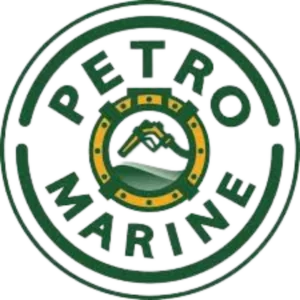I still remember a monthly safety walk at a distribution center where I consulted. Pallets were stacked neatly, and aisles looked clear, yet half the extinguisher tags told a different story. A seasonal display blocked one unit, another had a wavering gauge, and a CO₂ extinguisher was six pounds underweight. The facilities lead pulled me aside and said, “We do checks, but we are not confident we are catching everything.”
She enrolled her team in fire extinguisher inspector training that week. A month later, the logs were crisp, hazards were fixed before auditors spotted them, and the crew moved with confidence instead of guesswork.
Online certification takes that kind of improvement and makes it repeatable across shifts, sites, and new hires, without pulling people away for full days of classroom time.
What This Training Actually Solves For Your Team
Most workplaces already have extinguishers on the wall. The real gap lies in knowing how to assess them correctly, document findings clearly, and address minor problems before they escalate into fines or failures during an emergency.
A well-structured Fire Extinguisher Inspection Course consolidates scattered knowledge into a shared playbook. It clarifies:
- What must be checked during monthly walkthroughs
- Which conditions require immediate action
- How to document results so audits and inspections stay smooth and predictable
Instead of each person doing inspections “their own way,” everyone follows the same, proven standard.
What A Fire Extinguisher Inspection Certification Training Program Should Include
When comparing options, focus on a course that covers start-to-finish inspection practice, not just theory. A strong program should teach how to:
- Read the nameplate and match the extinguisher type to hazards such as ABC dry chemical, CO₂, water mist, clean agent, and Class K
- Apply placement rules, visibility requirements, mounting height, and travel distance expectations.
- Conduct a thorough monthly inspection, including pin and seal checks, ensuring the gauge reads in the green or displays the correct weight for CO₂, and verifying an unobstructed hose and nozzle. Additionally, inspect the body for signs of corrosion or dents.s
- Recognize expired hydrostatic test dates and maintenance intervals.s
- Use consistent tagging conventions and legible recordkeeping.
- Decide when an extinguisher must be removed from service and who to contact for maintenance or recharge.
By the end, your team should know exactly what a comprehensive inspection entails and how to act on the findings.
Skills You Will Practice
Great training moves beyond slide decks. Learners should receive realistic, field-ready practice, often through scenario-based exercises that simulate portable fire extinguisher inspection training in real-world facilities. Typical skills include:
- Identifying intact and broken tamper seals
- Reading pressure gauges and understanding the nuances for units that rely on weight instead of a gauge
- Checking brackets, signs, and mounting hardware
- Recognizing obstructions, from shrink-wrapped pallets to seasonal displays.
- Writing clear, audit-friendly notes such as:
“South exit ABC 5 lb: gauge low, seal missing, removed and replaced with spare, ticket 1245 opened.”
These exercises help people build muscle memory so inspections feel natural on the floor.
Formats That Fit Real Schedules
A flexible format makes adoption much easier. For busy teams, self-paced online fire extinguisher inspection certification allows staff to train on a tablet or phone between tasks, eliminating the need to spend a whole day traveling and in the classroom.
Many modern courses:
- Break material into short 5 to 10-minute segments
- Include quick knowledge checks to reinforce learning.
- Provide printable checklists and reference sheets.
- End with a final assessment and a downloadable certificate.
For teams that want extra confidence, a blended format can pair the online modules with a short on-site practical led by a supervisor or safety lead.
Who Should Take This Training And When
This training is not just for safety managers. Good candidates include:
- Facilities and operations leaders
- Shift supervisors and team leads.
- Maintenance technicians
- Security staff who regularly patrol the floor
- Any employee responsible for monthly extinguisher inspections
New hires can complete the course during onboarding, so they start with clear expectations. Veteran staff can use it as an annual refresher, especially after layout changes, the introduction of new equipment, or seasonal inventory that increases the risk of obstruction.
How Online Training Pays For Itself
Budget questions come up quickly, and they should. The cost of certification exceeds the course fee. It also includes the time spent on rework, the stress of rushed audits, and the risk of missed deficiencies.
When training is delivered online, you:
- Eliminate travel and reduce schedule disruptions
- Reduce repeat walkthroughs caused by incomplete or inconsistent inspections.
- Catch issues like overdue hydrotests or low weights before regulators or insurers do
Over time, smoother inspections and fewer last-minute fixes often offset the investment, especially for organizations that complete large numbers of monthly checks.
What To Look For In A Fire Extinguisher Inspector Course
Not all programs cover the same ground. When you evaluate a fire extinguisher inspector course, look for:
- Precise mapping to recognized inspection practices, including monthly checks and annual maintenance handoffs
- Short, scenario-based modules with photos of real tags, gauges, and common damage
- A printable inspection checklist tailored for monthly walkthroughs
- A graded assessment with remediation so learners can close knowledge gaps right away
- A shareable certificate that your HR system or learning platform can store
These elements show that the provider understands both field reality and compliance expectations.
Field-Ready Tools And Checklists
Training is half the story; execution in the field is the other half. The best programs offer straightforward tools that streamline inspections, making them faster and more reliable. These tools often support your pursuit of fire extinguisher inspector certification by helping you build consistent habits.
Common examples include:
- A route map that groups extinguishers by zone to shorten walk time
- A quick decision tree that guides choices to pass, fix on the spot, or remove and replace
- A tag photo guide that shows correct notation for dates, initials, and findings
- A spare unit protocol so coverage never lapses while a unit is serviced
- A short obstruction guide so staff can adjust displays or pallets before they become violations
With these aids, even new inspectors can perform high-quality checks with confidence.
A Real-World Rollout Plan For A Multi-Site Company
Here is how one multi-site retailer rolled out training in just two weeks:
Week 1: The safety lead assigned online modules to 18 supervisors and maintenance technicians. They completed the material on their phones during low traffic hours. Meanwhile, the facilities team printed new zone maps and stocked a shelf with spare ABC units.
Week 2: Each trained person walked their assigned zone with the new checklist in hand. They found two blocked extinguishers, three with missing seals, one underweight CO₂ unit, and four units with overdue hydrotest dates. Blocked units were cleared, underweight units were swapped, and service tickets were opened for hydrotests.
Result: The next audit passed with only minor notes. More importantly, the team adopted a simple cadence: on the first Monday of each month, they performed a 45-minute walk followed by a short huddle to close any gaps.
Common Mistakes This Training Helps You Avoid
Consistent training helps your team avoid problems that show up repeatedly in the field, such as:
- Treating all extinguishers the same, including CO₂ units that rely on weight instead of a gauge
- Skipping checks of the mount, bracket, and access path
- Ignoring missing seals or pins that may indicate tampering
- Overlooking hydrotest and maintenance cycles on tags and cylinder stamps
- Writing vague notes like “looks fine” instead of clear, specific findings
By addressing these issues in training, you reduce repeat deficiencies and unpleasant surprises during inspections.
How This Training Supports Emergency Readiness
Monthly inspections do not replace annual maintenance or live fire drills. They support them by keeping equipment ready and by highlighting patterns that need attention.
A well-trained inspector:
- Confirms that the nearest extinguisher is visible and accessible
- Verifies that its type matches the hazard in the area
- Identifies recurring issues such as chronic obstructions or rough handling
- Flags training needs for the broader workforce.
The result is a workplace where minor incidents are more likely to remain small because staff can quickly reach and use functioning equipment.
Building A Culture That Keeps Checks From Slipping
Knowledge sticks when it is paired with habits and simple systems. High performing teams often:
- Schedule monthly inspections on a shared calendar
- Assign zones so each person owns a consistent route.
- Keep two spare units per floor for immediate swap.s
- Use a clear naming convention, such as site or floor plus aisle and number, to make findings easy to locate later.
- Share quick success stories, such as “Three obstructions cleared in home goods, new signage added”
These habits turn inspections from a forgotten task into a predictable part of running the operation safely.
What The Assessment Should Feel Like
A good assessment is fair, practical, and directly related to field work. You can expect:
- Photo-based questions that show gauges, tags, and common defects
- Short scenarios such as “This ABC 5 lb unit shows the gauge slightly below green. What is your next step?”
- A clear passing score and instant feedback on missed items
Learners who miss a question should see a brief explanation and have the opportunity to retry. When they pass, their certificate should be easy to download and store, without chasing paperwork.
Updating Your SOPs After Training
Training is the spark; your standard operating procedures keep the flame steady. After your team completes a course, update your SOPs to include:
- The monthly inspection checklist
- Zone maps and routes
- Spare unit and replacement protocols
- Photo guidelines for documenting deficiencies
- Purchasing rules to ensure that new extinguishers match on-site hazards
You can also require supervisors to complete inspection certification online or equivalent training within their first month and tie performance reviews, in part, to clean logs and successful audits.
Ready To Train Your Team
If you are responsible for safety, you already carry the quiet weight of knowing that when something goes wrong, every second counts. A clear, practical program turns that weight into steady action: short monthly walks, solid notes, and equipment that is readily available when needed.
Starting with a pilot group of supervisors, providing them with a checklist, and observing the ripple effects across your sites is often the fastest way to see the difference that structured training can make.


















